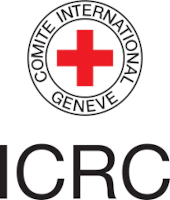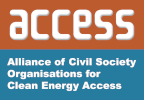Click here to register!
Difference between revisions of "NAE Case Study: Peru, Concession Model for Standalone Systems"
***** (***** | *****) m |
***** (***** | *****) m |
||
| (2 intermediate revisions by the same user not shown) | |||
| Line 1: | Line 1: | ||
| − | |||
[[File:Back to NAE Overview Page.png|center|800px|NAE Overview Page|alt=NAE Overview Page|link=National Approaches to Electrification – Review of Options]] | [[File:Back to NAE Overview Page.png|center|800px|NAE Overview Page|alt=NAE Overview Page|link=National Approaches to Electrification – Review of Options]] | ||
| − | + | {{NAE Case Study Table Peru}} | |
| − | |||
<br/> | <br/> | ||
| Line 9: | Line 7: | ||
= Description<br/> = | = Description<br/> = | ||
| − | + | Following approval from National Electricity Office (DGE - Dirección General de la Electricidad), regional governments grant authorisations and final concessions for renewable electricity projects in their region whose installed capacity is greater than 500 kW and less than 10 MW (concessions are not required for interventions less than 500kW). In 2012, DGER requested the regulator to set an official cost recovery tariff for Solar Home Systems (SHS). This was introduced to cover SHS of different sizes and at different locations (coast, highland and jungle), and thereby made such systems eligible for cross-subsidy. In July 2012, DGE granted a rural electricity concession to provide energy to the town of La Lucmilla, in the Cachachi district (Cajabamba Province). This was the first rural electricity concession awarded in Peru based exclusively on domestic SHS. For such concessions, tariffs to rural customers are capped at the level of the maximum regulated urban tariff, and a connection charge is included in the capital cost of the project. Capital cost subsidies are provided for rural electrification projects (each project typically has 200-5000 connections). Tariff cross-subsidies are provided in addition to capital cost subsidies. Productive uses are encouraged to increase rural loads and revenues. Operating and maintenance costs are shared by monthly fees paid by the <span style="font-size: 0.85em;">community and government subsidies. Solar home systems (SHSs) have been recognised as the best option to reach dispersed and remote users. </span> | |
| + | |||
| + | <span style="font-size: 0.85em;"></span> | ||
<span style="font-size: 0.85em;"></span> | <span style="font-size: 0.85em;"></span> | ||
| Line 15: | Line 15: | ||
= Context = | = Context = | ||
| − | + | The total installed power generation capacity (2016) is 11.72GW. In 2015, Peru generated 9.5% of its total 48TWh from biomass, wind, solar and small hydro. Large hydro accounted for 41.2%, natural gas for 30.8%, and coal, oil and diesel for the rest. Of the 31m population, 21% live in rural areas. In 2016, 93% of the population had access to electricity (compared to 45% in 1990). Grid electricity is used by 39% of the rural households, most of which consume less than 30 kWh per month with 20-40% used for lighting. In rural households without electricity, the most common source of energy for lighting is kerosene (80% of rural households) and candles (65%). Peru’s energy sector was privatised in the 1990´s and concessions were granted for power generation, transmission and distribution. However, although investment in generation, transmission and distribution in urban areas is predominantly private, support for rural electrification comes mainly from public sources. In 2008, for the five year period until 2013, Peru set a 5% mandatory national target for the renewable energy proportion of total electricity consumption. This proved to be an effective motivator (even though, as of 2016, the target had not been revised). In 2008, Peru also introduced a series of project auctions for new power generation from renewable energy sources, including mini-grids and stand-alone systems, which have helped to drive increased access to clean electricity. Every two years, the Ministerio de Energia y Minas (MINEM) evaluates the need for auctions, and the Organismo Supervisor de la Inversión en Energía y Mineria (OSINERGMIN) conducts the tenders. The auctions are technology-specific and contracts are awarded to developers who offer the lowest tariff per kWh for a given technology. Peru has held five renewable auctions, including one for off-grid solar capacity which requested up to 500,000 solar photovoltaic systems for off-grid areas. In the on-grid tenders, OSINERGMIN has awarded power contracts to 64 projects for a total of 1,257MW from biomass, small hydro, solar and wind sources. | |
= Objectives = | = Objectives = | ||
| − | + | The concession for providing electricity via solar home systems was part of Peru's longer term plan to make electricity more widely available to people living in rural areas where more than six million people lack access to electricity. Peru’s renewable-based rural electrification master plan identifies the need to expand renewable electricity to more than 361,847 homes. The plan calls for 10,829 villages with 10 households or more as target villages for electrification by photovoltaic (PV) panels. The plan is divided into four phases, with the aim of reaching completion in 2020 with the electrification of 261,520 households through the use of PV panels. | |
= Legal Basis = | = Legal Basis = | ||
| − | The Renewable | + | The Legislative Decree No. 1002, dated May 2008, is the “Law for the Promotion of Electricity Generation with Renewable Energies”. In addition, Peru has a Rural Electrification Law (Ley de electrificacion rural y de localidades aisladas de fronteras-No.27744), which states that the electrification of rural areas, and isolated localities in the country are a national need and are publicly required. On the basis of this RE Law, a “Plan Nacional de Electrificación Rural" (PNER) is prepared every two years, with the current PNER covering 2016-2025. Concessions are governed by the Electricity Concessions Law (LCE) of 1992.. |
= Institutions, Roles and Responsibilities<br/> = | = Institutions, Roles and Responsibilities<br/> = | ||
| − | + | National Electricity Office (DGE - Dirección General de la Electricidad), under Ministerio de Energia y Minas (MEM): in charge of setting electricity policies and regulations, and of granting concessions. Also responsible for elaborating generation and transmission expansion plans, and for approving procedures for the operation of the electricity system. | |
| + | |||
| + | General Directorate of Rural Electrification (DGER - Direccion General de Electrificacion Rural), under MEM: responsible for rural electrification (using stand-alone systems and mini-grids). This includes administration of the rural electrification fund, planning, designing and constructing the relevant rural electricity systems, and coordination of such activities with local/regional governments and electricity enterprises. (Once they are finalized, the rural electricity systems are handed over for operation either to state-owned distribution companies or to a specially created state-owned asset-holding company that manages the systems under operation contracts with state-owned companies, or municipalities). | ||
| + | |||
| + | Empresa de Administracion de Infrastructura Electrica S.A. (ADINELSA): a state-owned entity that is the main implementing company in the field of rural electrification, responsible for administering publicly-funded rural electrification activities outside the concession areas. | ||
| + | |||
| + | Organismo Supervisor de la Inversión en Energía y Mineria (OSINERGMIN): responsible for enforcing compliance with the Electricity Concessions Law and with legal and technical regulations related to activities in the electricity, hydrocarbon and mining subsectors; also in charge of ensuring the electricity public service. | ||
| + | |||
| + | Centre for Energy Conservation and the Environment (CENERGÍA): a non-profit body that promotes clean energy and energy efficiency for all the economic activities in Peru | ||
| + | |||
| + | National Institute for Defense of Competition and the Protection of Intellectual Property (INDECOPI): in charge of monitoring compliance with the Anti-monopoly and Anti-oligopoly Law of 1997, and deals with concession agreements in this context. | ||
= Interventions<br/> = | = Interventions<br/> = | ||
| − | + | Following DGE approval, regional governments grant authorisations and final concessions for renewable electricity projects in their region whose installed capacity is greater than 500 kW and less than 10 MW (concessions are not required for interventions less than 500kW). In 2012, DGER requested the regulator to set an official cost recovery tariff for Solar Home Systems (SHS). This was introduced to cover SHS of different sizes and at different locations (coast, highland and jungle), and thereby made such systems eligible for cross-subsidy. In July 2012, DGE granted a rural electricity concession to provide energy to the town of La Lucmilla, in the Cachachi district (Cajabamba Province). This was the first rural electricity concession awarded in Peru based exclusively on domestic SHS. For such concessions, tariffs to rural customers are capped at the level of the maximum regulated urban tariff, and a connection charge is included in the capital cost of the project. Capital cost subsidies are provided for rural electrification projects (each project typically has 200-5000 connections). Tariff cross-subsidies are provided in addition to capital cost subsidies. Productive uses are encouraged to increase rural loads and revenues. Operating and maintenance costs are shared by monthly fees paid by the community and government subsidies. Solar home systems (SHSs) have been recognised as the best option to reach dispersed and remote users. | |
= Impacts Achieved<br/> = | = Impacts Achieved<br/> = | ||
| − | + | This initiative has met a two-fold objective of improving communities’ living conditions and developing organizational, technical and managerial skills at local, municipal, regional and national levels. At a national level, the process of granting concessions has had a positive impact on affordability, with the average contracts awarded in Feb 2016 for wind and solar projects representing the lowest prices recorded on an unsubsidised basis in the Western Hemisphere at the time. Concession companies today have high payment rates and low losses. | |
= Lessons Learned<br/> = | = Lessons Learned<br/> = | ||
| − | + | The dramatically increased rate of rural electrification since 2007 was due to a variety of key factors including i) highest level political commitment, ii) specific legislation established for rural electrification, iii) dedicated institutional and financial capacity created (DGER and the Rural Electrification Fund with US$150-200m/year), iv) objectives broadened from energy access to rural development, v) productive uses included and served. Other lessons learned from the experience in Peru were i) Key elements are government commitment, leadership and adequate resources, ii) specific institutional, legal and regulatory frameworks are required, iii) an appropriate system of capital cost subsidies and tariff cross-subsidies can allow service providers to receive cost reflective tariffs while rural people pay an affordable tariff, iv) an official tariff for individual SHS opens the door to regulated service by distribution companies and access to tariff subsidies, v) the promotion of productive uses enhances benefits for rural communities and providers. One concern with the concession model in Peru is that concessionaires are concentrated in small areas around urban centres and have an obligation to meet service requests only within 100 meters of the existing network. There is thus no incentive for either public or private companies to extend service to households outside these concession areas. In addition, decision-makers should be made aware of the constraint placed on alternative clean energy development prospects for rural areas. For example, the concession approach can deter other renewable energy use in isolated areas due to the subsidies available; subsidies for fuels awarded to electricity concession companies for isolated systems represent a barrier to the economic viability of renewable technologies that face the “business as usual” scenario. | |
= Effectiveness<br/> = | = Effectiveness<br/> = | ||
| − | + | A rural consumer's average energy consumption was 8kWh/month. The promotion of stand-alone systems was motivated by the increasing cost of grid expansion, which grew from US$450/consumer in 1993 to US$3500/consumer in 2011. This compares to US$1000 for a PV (80W peak) connection that provided 10-11kWh/month, or US$1700 for a 160W peak connection delivering 16.5kWh/month. These estimated power outputs from the PV systems are possible based on the studies of solar radiation elaborated by the Ministry Energy and Mines (MEM), which is a critical factor when determining the likely value for money. Using these estimates, the provision of stand-alone PV systems for such rural areas was therefore a very cost-effective approach for providing a tier 2 level of service for energy access. The expected time delay for grid expansion to such areas (10-20 years) was another factor that was well-addressed by stand-alone systems. | |
| + | |||
| + | = Overview of Other Country Case Studies = | ||
| + | |||
| + | {{NAE Case Studies Navigation Table}} | ||
| + | |||
| + | <br/> | ||
= References = | = References = | ||
| − | *[ | + | *[https://energypedia.info/images/5/5f/Documentos_Rural_Electrification_in_Peru_db7943a3.pdf https://energypedia.info/images/5/5f/Documentos_Rural_Electrification_in_Peru_db7943a3.pdf] |
| − | * | + | *[[Peru Energy Situation|https://energypedia.info/wiki/Peru_Energy_Situation]] |
| − | *[ | + | *[http://www.esmap.org/sites/esmap.org/files/ESMAP_PeruNationalSurvey_Web_0.pdf http://www.esmap.org/sites/esmap.org/files/ESMAP_PeruNationalSurvey_Web_0.pdf] |
| − | *[ | + | *IOREC (2016), 3rd International Off-Grid Renewable Energy Conference & Exhibition [http://iorec.irena.org/IRENA_Accelerating_off-grid_renewables_2017.pdf http://iorec.irena.org/IRENA_Accelerating_off-grid_renewables_2017.pdf] |
| − | * | + | *[http://partnership-africa.org/sites/default/files/12-Susan-Bogach-Rural-Electrification-in-Peru.pdf http://partnership-africa.org/sites/default/files/12-Susan-Bogach-Rural-Electrification-in-Peru.pdf] |
| − | + | *[https://ruralelec.org/sites/default/files/peru_off-grid_market_12_pages.pdf https://ruralelec.org/sites/default/files/peru_off-grid_market_12_pages.pdf] | |
| − | + | *Sustainable Energy for All Americas: PERU: Rapid Assessment and Gap Analysis | |
| − | + | *[http://wbcsdpublications.org/wp-content/uploads/2016/02/WBCSD_case_ACCIONA_energy_Peru.pdf http://wbcsdpublications.org/wp-content/uploads/2016/02/WBCSD_case_ACCIONA_energy_Peru.pdf] | |
| − | *[https:// | + | *World Bank, (2000), Regulatory Approaches to Rural Electrification and Renewable Energy: Case Studies from Six Developing Countries [http://www.martinot.info/Martinot_Reiche_WB.pdf http://www.martinot.info/Martinot_Reiche_WB.pdf] |
| − | |||
| − | * | ||
| − | *[http:// | ||
| − | *[http://www. | ||
<br/> | <br/> | ||
| Line 65: | Line 77: | ||
{{NAE Acknowledgements}} | {{NAE Acknowledgements}} | ||
| + | [[Category:NAE]] | ||
[[Category:Peru]] | [[Category:Peru]] | ||
| − | |||
Latest revision as of 13:21, 16 July 2018
![NAE Case Study Table Peru.png]]](/images/thumb/9/95/NAE_Case_Study_Table_Peru.png/800px-NAE_Case_Study_Table_Peru.png) |
Description
Following approval from National Electricity Office (DGE - Dirección General de la Electricidad), regional governments grant authorisations and final concessions for renewable electricity projects in their region whose installed capacity is greater than 500 kW and less than 10 MW (concessions are not required for interventions less than 500kW). In 2012, DGER requested the regulator to set an official cost recovery tariff for Solar Home Systems (SHS). This was introduced to cover SHS of different sizes and at different locations (coast, highland and jungle), and thereby made such systems eligible for cross-subsidy. In July 2012, DGE granted a rural electricity concession to provide energy to the town of La Lucmilla, in the Cachachi district (Cajabamba Province). This was the first rural electricity concession awarded in Peru based exclusively on domestic SHS. For such concessions, tariffs to rural customers are capped at the level of the maximum regulated urban tariff, and a connection charge is included in the capital cost of the project. Capital cost subsidies are provided for rural electrification projects (each project typically has 200-5000 connections). Tariff cross-subsidies are provided in addition to capital cost subsidies. Productive uses are encouraged to increase rural loads and revenues. Operating and maintenance costs are shared by monthly fees paid by the community and government subsidies. Solar home systems (SHSs) have been recognised as the best option to reach dispersed and remote users.
Context
The total installed power generation capacity (2016) is 11.72GW. In 2015, Peru generated 9.5% of its total 48TWh from biomass, wind, solar and small hydro. Large hydro accounted for 41.2%, natural gas for 30.8%, and coal, oil and diesel for the rest. Of the 31m population, 21% live in rural areas. In 2016, 93% of the population had access to electricity (compared to 45% in 1990). Grid electricity is used by 39% of the rural households, most of which consume less than 30 kWh per month with 20-40% used for lighting. In rural households without electricity, the most common source of energy for lighting is kerosene (80% of rural households) and candles (65%). Peru’s energy sector was privatised in the 1990´s and concessions were granted for power generation, transmission and distribution. However, although investment in generation, transmission and distribution in urban areas is predominantly private, support for rural electrification comes mainly from public sources. In 2008, for the five year period until 2013, Peru set a 5% mandatory national target for the renewable energy proportion of total electricity consumption. This proved to be an effective motivator (even though, as of 2016, the target had not been revised). In 2008, Peru also introduced a series of project auctions for new power generation from renewable energy sources, including mini-grids and stand-alone systems, which have helped to drive increased access to clean electricity. Every two years, the Ministerio de Energia y Minas (MINEM) evaluates the need for auctions, and the Organismo Supervisor de la Inversión en Energía y Mineria (OSINERGMIN) conducts the tenders. The auctions are technology-specific and contracts are awarded to developers who offer the lowest tariff per kWh for a given technology. Peru has held five renewable auctions, including one for off-grid solar capacity which requested up to 500,000 solar photovoltaic systems for off-grid areas. In the on-grid tenders, OSINERGMIN has awarded power contracts to 64 projects for a total of 1,257MW from biomass, small hydro, solar and wind sources.
Objectives
The concession for providing electricity via solar home systems was part of Peru's longer term plan to make electricity more widely available to people living in rural areas where more than six million people lack access to electricity. Peru’s renewable-based rural electrification master plan identifies the need to expand renewable electricity to more than 361,847 homes. The plan calls for 10,829 villages with 10 households or more as target villages for electrification by photovoltaic (PV) panels. The plan is divided into four phases, with the aim of reaching completion in 2020 with the electrification of 261,520 households through the use of PV panels.
Legal Basis
The Legislative Decree No. 1002, dated May 2008, is the “Law for the Promotion of Electricity Generation with Renewable Energies”. In addition, Peru has a Rural Electrification Law (Ley de electrificacion rural y de localidades aisladas de fronteras-No.27744), which states that the electrification of rural areas, and isolated localities in the country are a national need and are publicly required. On the basis of this RE Law, a “Plan Nacional de Electrificación Rural" (PNER) is prepared every two years, with the current PNER covering 2016-2025. Concessions are governed by the Electricity Concessions Law (LCE) of 1992..
Institutions, Roles and Responsibilities
National Electricity Office (DGE - Dirección General de la Electricidad), under Ministerio de Energia y Minas (MEM): in charge of setting electricity policies and regulations, and of granting concessions. Also responsible for elaborating generation and transmission expansion plans, and for approving procedures for the operation of the electricity system.
General Directorate of Rural Electrification (DGER - Direccion General de Electrificacion Rural), under MEM: responsible for rural electrification (using stand-alone systems and mini-grids). This includes administration of the rural electrification fund, planning, designing and constructing the relevant rural electricity systems, and coordination of such activities with local/regional governments and electricity enterprises. (Once they are finalized, the rural electricity systems are handed over for operation either to state-owned distribution companies or to a specially created state-owned asset-holding company that manages the systems under operation contracts with state-owned companies, or municipalities).
Empresa de Administracion de Infrastructura Electrica S.A. (ADINELSA): a state-owned entity that is the main implementing company in the field of rural electrification, responsible for administering publicly-funded rural electrification activities outside the concession areas.
Organismo Supervisor de la Inversión en Energía y Mineria (OSINERGMIN): responsible for enforcing compliance with the Electricity Concessions Law and with legal and technical regulations related to activities in the electricity, hydrocarbon and mining subsectors; also in charge of ensuring the electricity public service.
Centre for Energy Conservation and the Environment (CENERGÍA): a non-profit body that promotes clean energy and energy efficiency for all the economic activities in Peru
National Institute for Defense of Competition and the Protection of Intellectual Property (INDECOPI): in charge of monitoring compliance with the Anti-monopoly and Anti-oligopoly Law of 1997, and deals with concession agreements in this context.
Interventions
Following DGE approval, regional governments grant authorisations and final concessions for renewable electricity projects in their region whose installed capacity is greater than 500 kW and less than 10 MW (concessions are not required for interventions less than 500kW). In 2012, DGER requested the regulator to set an official cost recovery tariff for Solar Home Systems (SHS). This was introduced to cover SHS of different sizes and at different locations (coast, highland and jungle), and thereby made such systems eligible for cross-subsidy. In July 2012, DGE granted a rural electricity concession to provide energy to the town of La Lucmilla, in the Cachachi district (Cajabamba Province). This was the first rural electricity concession awarded in Peru based exclusively on domestic SHS. For such concessions, tariffs to rural customers are capped at the level of the maximum regulated urban tariff, and a connection charge is included in the capital cost of the project. Capital cost subsidies are provided for rural electrification projects (each project typically has 200-5000 connections). Tariff cross-subsidies are provided in addition to capital cost subsidies. Productive uses are encouraged to increase rural loads and revenues. Operating and maintenance costs are shared by monthly fees paid by the community and government subsidies. Solar home systems (SHSs) have been recognised as the best option to reach dispersed and remote users.
Impacts Achieved
This initiative has met a two-fold objective of improving communities’ living conditions and developing organizational, technical and managerial skills at local, municipal, regional and national levels. At a national level, the process of granting concessions has had a positive impact on affordability, with the average contracts awarded in Feb 2016 for wind and solar projects representing the lowest prices recorded on an unsubsidised basis in the Western Hemisphere at the time. Concession companies today have high payment rates and low losses.
Lessons Learned
The dramatically increased rate of rural electrification since 2007 was due to a variety of key factors including i) highest level political commitment, ii) specific legislation established for rural electrification, iii) dedicated institutional and financial capacity created (DGER and the Rural Electrification Fund with US$150-200m/year), iv) objectives broadened from energy access to rural development, v) productive uses included and served. Other lessons learned from the experience in Peru were i) Key elements are government commitment, leadership and adequate resources, ii) specific institutional, legal and regulatory frameworks are required, iii) an appropriate system of capital cost subsidies and tariff cross-subsidies can allow service providers to receive cost reflective tariffs while rural people pay an affordable tariff, iv) an official tariff for individual SHS opens the door to regulated service by distribution companies and access to tariff subsidies, v) the promotion of productive uses enhances benefits for rural communities and providers. One concern with the concession model in Peru is that concessionaires are concentrated in small areas around urban centres and have an obligation to meet service requests only within 100 meters of the existing network. There is thus no incentive for either public or private companies to extend service to households outside these concession areas. In addition, decision-makers should be made aware of the constraint placed on alternative clean energy development prospects for rural areas. For example, the concession approach can deter other renewable energy use in isolated areas due to the subsidies available; subsidies for fuels awarded to electricity concession companies for isolated systems represent a barrier to the economic viability of renewable technologies that face the “business as usual” scenario.
Effectiveness
A rural consumer's average energy consumption was 8kWh/month. The promotion of stand-alone systems was motivated by the increasing cost of grid expansion, which grew from US$450/consumer in 1993 to US$3500/consumer in 2011. This compares to US$1000 for a PV (80W peak) connection that provided 10-11kWh/month, or US$1700 for a 160W peak connection delivering 16.5kWh/month. These estimated power outputs from the PV systems are possible based on the studies of solar radiation elaborated by the Ministry Energy and Mines (MEM), which is a critical factor when determining the likely value for money. Using these estimates, the provision of stand-alone PV systems for such rural areas was therefore a very cost-effective approach for providing a tier 2 level of service for energy access. The expected time delay for grid expansion to such areas (10-20 years) was another factor that was well-addressed by stand-alone systems.
Overview of Other Country Case Studies
![NAE Case Studies Navigation Table.png]]](/images/thumb/0/0b/NAE_Case_Studies_Navigation_Table.png/800px-NAE_Case_Studies_Navigation_Table.png) |
References
- https://energypedia.info/images/5/5f/Documentos_Rural_Electrification_in_Peru_db7943a3.pdf
- https://energypedia.info/wiki/Peru_Energy_Situation
- http://www.esmap.org/sites/esmap.org/files/ESMAP_PeruNationalSurvey_Web_0.pdf
- IOREC (2016), 3rd International Off-Grid Renewable Energy Conference & Exhibition http://iorec.irena.org/IRENA_Accelerating_off-grid_renewables_2017.pdf
- http://partnership-africa.org/sites/default/files/12-Susan-Bogach-Rural-Electrification-in-Peru.pdf
- https://ruralelec.org/sites/default/files/peru_off-grid_market_12_pages.pdf
- Sustainable Energy for All Americas: PERU: Rapid Assessment and Gap Analysis
- http://wbcsdpublications.org/wp-content/uploads/2016/02/WBCSD_case_ACCIONA_energy_Peru.pdf
- World Bank, (2000), Regulatory Approaches to Rural Electrification and Renewable Energy: Case Studies from Six Developing Countries http://www.martinot.info/Martinot_Reiche_WB.pdf
Authors
Authors: Mary Willcox, Dean Cooper
Acknowledgements
The Review was prepared by Mary Willcox and Dean Cooper of Practical Action Consulting working with Hadley Taylor, Silvia Cabriolu-Poddu and Christina Stuart of the EU Energy Initiative Partnership Dialogue Facility (EUEIPDF) and Michael Koeberlein and Caspar Priesemann of the Energising Development Programme (EnDev). It is based on a literature review, stakeholder consultations. The categorization framework in the review tool is based on the EUEI/PDF / Practical Action publication "Building Energy Access Markets - A Value Chain Analysis of Key Energy Market Systems".
A wider range of stakeholders were consulted during its preparation and we would particularly like to thank the following for their valuable contributions and insights: - Jeff Felten, AfDB - Marcus Wiemann and other members, ARE - Guilherme Collares Pereira, EdP - David Otieno Ochieng, EUEI-PDF - Silvia Luisa Escudero Santos Ascarza, EUEI-PDF - Nico Peterschmidt, Inensus - John Tkacik, REEEP - Khorommbi Bongwe, South Africa: Department of Energy - Rashid Ali Abdallah, African Union Commission - Nicola Bugatti, ECREEE - Getahun Moges Kifle, Ethiopian Energy Authority - Mario Merchan Andres, EUEI-PDF - Tatjana Walter-Breidenstein, EUEI-PDF - Rebecca Symington, Mlinda Foundation - Marcel Raats, RVO.NL - Nico Tyabji, Sunfunder -
Any feedback would be very welcome. If you have any comments or enquires please contact: mary.willcox@practicalaction.org.uk, benjamin.attigah@euei-pdf.org, or caspar.priesemann@giz.de.
Download the Tool as a Power Point: https://energypedia.info/images/a/aa/National_Approaches_to_Electrification_-_Review_of_Options.pptx




















